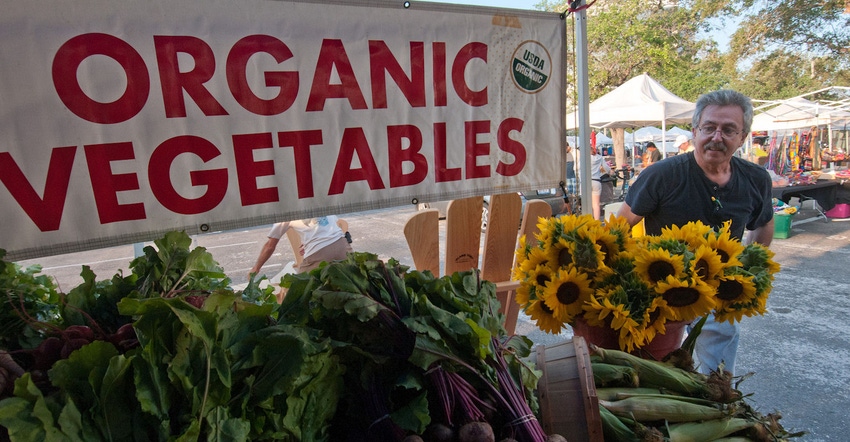OTA survey pegs 2016 market at $47 billion and shows greater market share.
May 24, 2017

The robust American organic sector stayed on its upward trajectory in 2016, gaining new market share and shattering records as consumers across the U.S. ate and used more organic products than ever before, according to the Organic Trade Assn.’s (OTA) 2017 "Organic Industry Survey" released Wednesday at OTA’s Annual Policy Conference.
Organic sales in the U.S. totaled around $47 billion in 2016, reflecting new sales of almost $3.7 billion from the previous year. The $43 billion in organic food sales marked the first time the American organic food market has broken though the $40 billion mark. Organic food now accounts for 5.3% of total food sales in this country -- another significant first for organic.
Organic food sales increased by 8.4%, or $3.3 billion, from the previous year, blowing past the stagnant 0.6% growth rate in the overall food market. Sales of organic non-food products were up 8.8% in 2016, also more than the overall non-food growth rate of 0.8%.
The survey found that the organic industry is creating jobs. More than 60% of all organic businesses with more than five employees reported an increase of full-time employment during 2016 and said they planned to continue boosting their full-time work staff in 2017.
“The organic industry continues to be a real bright spot in the food and ag economy both at the farm gate and checkout counter,” OTA chief executive officer and executive director Laura Batcha said.
“Organic farmers are not just staying in business; they’re often expanding,” Batcha said. “Organic handling, manufacturing and processing facilities are being opened, enlarged and retooled. Organic farms, suppliers and handlers are creating jobs across the country, and the organic sector is growing and creating the kinds of healthy, environmentally friendly products that consumers are increasingly demanding.”
The organic fruits and vegetables sector held onto its position as the largest of the organic food categories, accounting for almost 40% of all organic food sales, at $15.6 billion. Posting an 8.4% growth rate -- almost triple the 3.3% growth pace of total fruit and vegetable sales -- organic fruits and vegetables now make up almost 15% of the produce Americans eat.
Across all organic food categories, shoppers are placing high value on freshness and convenience. Produce, grab-and-go salads and ready-to-eat veggies (fresh or frozen), were top sellers.
Consumers in recent years have sought "clean" products abundant in protein, and sales of organic protein-rich meat and poultry shot up by more than 17% in 2016 to $991 million -- the category’s biggest-ever yearly gain. Continued strong growth in that category should push 2017 sales across the $1 billion mark for the first time. Growing demand for natural, grass-fed or hormone-free meats and poultry is also spurring consumer interest in shopping the organic meat and poultry aisles.
“Organic products of all sorts are now found in the majority of kitchens and households across our country, but the organic sector is facing challenges to continue its growth,” Batcha said. "We need more organic farmers in this country to meet our growing organic demand, and the organic sector needs to have the necessary tools to grow and compete on a level playing field. That means federal, state and local programs that help support organic research and provide the organic farmer with a fully equipped toolkit to be successful.”
You May Also Like


.png?width=300&auto=webp&quality=80&disable=upscale)
